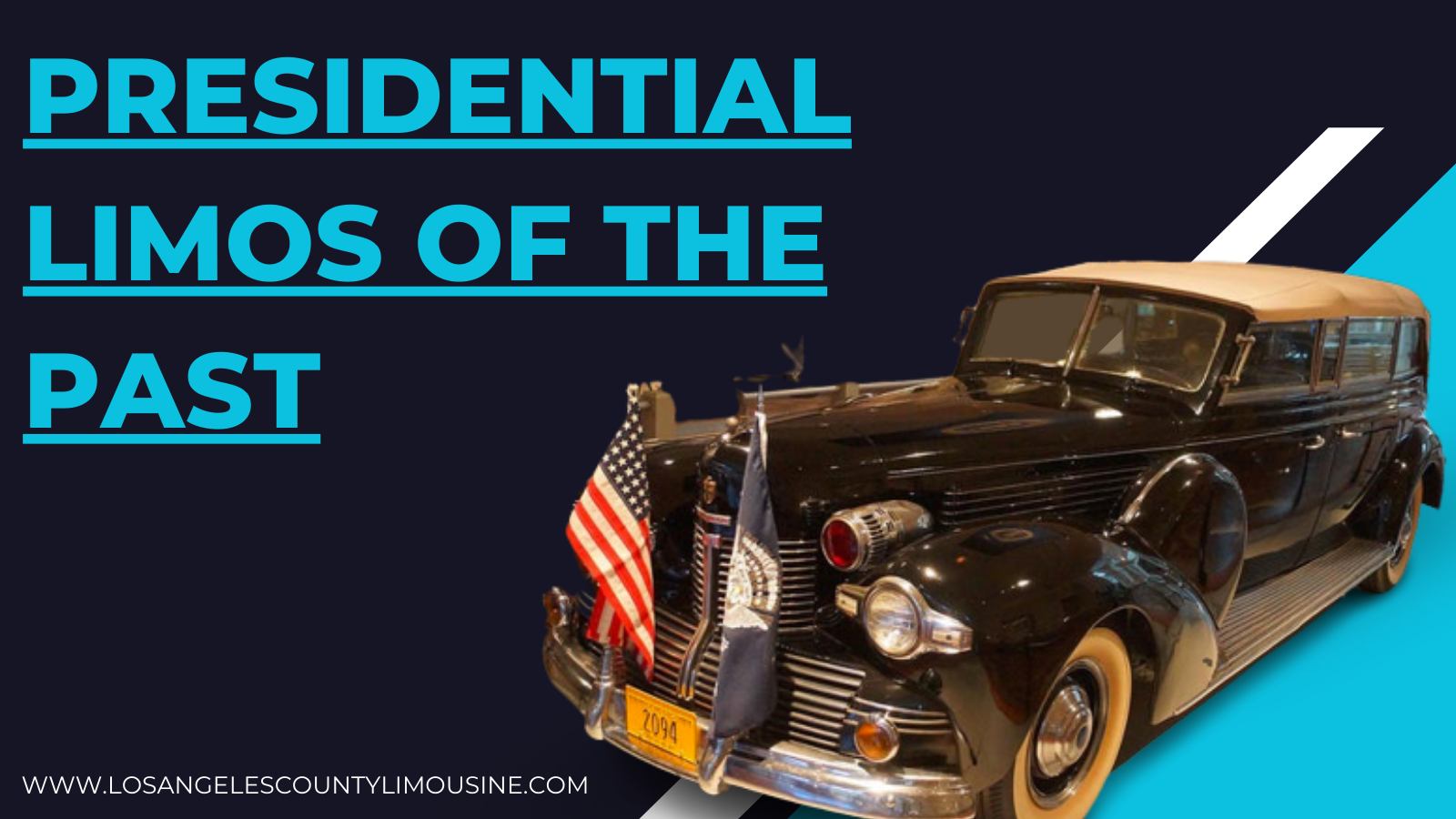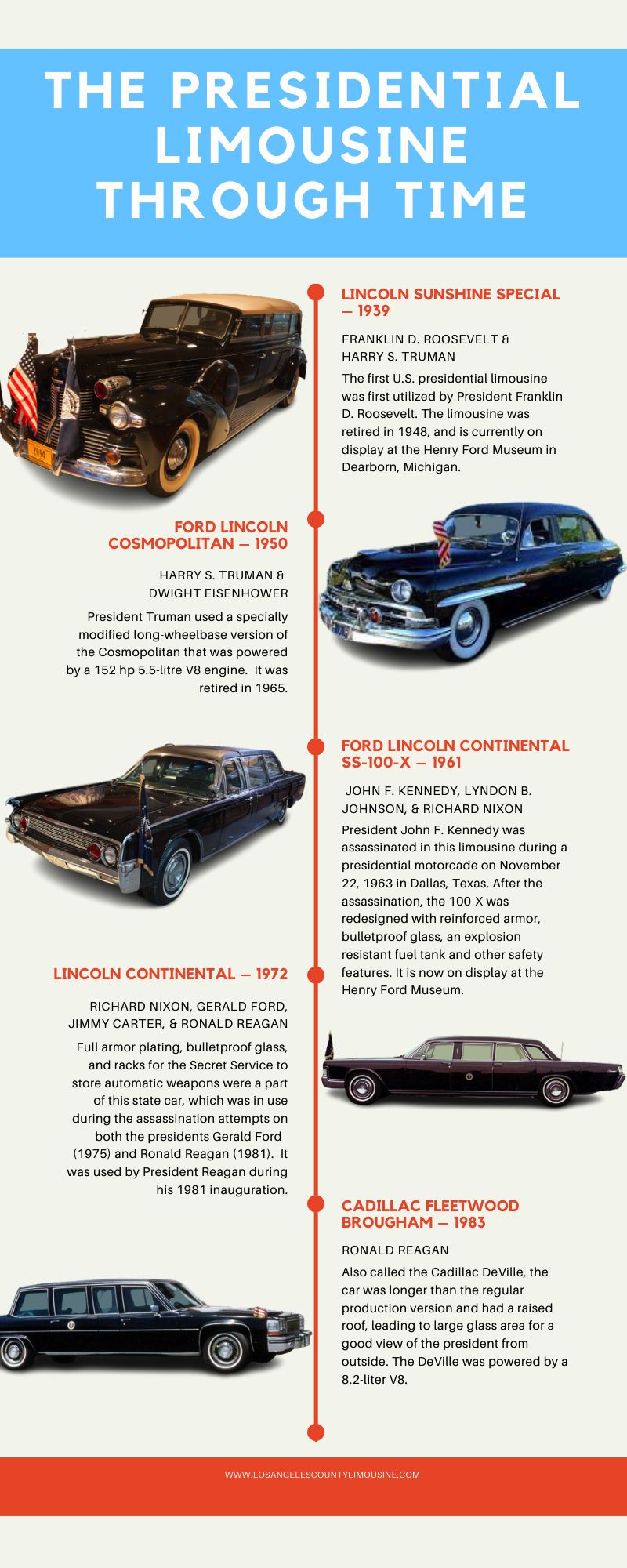Presidential limos have long been a symbol of power, prestige, and protection for the President of the United States. These vehicles, specially designed to meet the unique needs of the commander-in-chief, have witnessed the evolution of technology, security, and style over the years. Join us on a captivating journey through time as we explore the fascinating history of U.S. presidential limousines!
The Early Days
In the early years, before the advent of the automobile, U.S. presidents relied on horse-drawn carriages for transportation. The first president to use an automobile was William Howard Taft in 1909, who embraced the novelty of the motor vehicle.
Roosevelt and the First Limousine
The 32nd president, Franklin D. Roosevelt, introduced the iconic “Sunshine Special” in the 1930s. The Sunshine Special was a convertible limo equipped with advanced features for its time, including bulletproof glass and armoring. The 1939 Lincoln Sunshine Special was the first U.S. presidential limo and can now be seen at the Henry Ford Museum.
The Introduction of the “Bubbletop”
Following the attack on Pearl Harbor in 1941, security concerns escalated, leading to the development of the “bubbletop” design. The bubbletop featured a transparent roof section made of bulletproof material, providing enhanced protection while maintaining visibility.
Lincoln Continental Limo: A Presidential Favorite
The Lincoln Continental became synonymous with U.S. presidential limousines, beginning with President Kennedy’s tenure. The 1961 Lincoln Continental, famously known as the “Kennedy Continental,” was customized with various security features.
The Tragic Turn: The Assassination
The assassination of President John F. Kennedy in 1963 led to significant improvements in presidential limousine security. In 1981, President Ronald Reagan’s attempted assassination prompted further advancements, including the addition of bullet-resistant armor.
The Beast: Modern Presidential Limousines
The modern era introduced the heavily fortified presidential limousine known as “The Beast.” The Beast, introduced during President Barack Obama’s tenure, features state-of-the-art security measures, including armor plating, bulletproof glass, and advanced communication systems.
As technology progressed, presidential limousines incorporated cutting-edge features such as night vision, encrypted communications, and advanced navigation systems. In recent years, there has been an increasing focus on integrating sustainable technologies, with hybrid or electric powertrains being considered for future presidential limousines.
SEE ALSO: How Does Uber Compare To Limousines?
The Future
From the humble horse-drawn carriages of the past to the ultra-secure and technologically advanced limousines of today, U.S. presidential vehicles have evolved to ensure the safety and comfort of the nation’s leaders. Each limousine reflects the historical context of its time and showcases the continuous efforts to stay ahead of potential threats. As we marvel at the remarkable history of presidential limos, we can only imagine what the future holds for these iconic symbols of power and protection.


